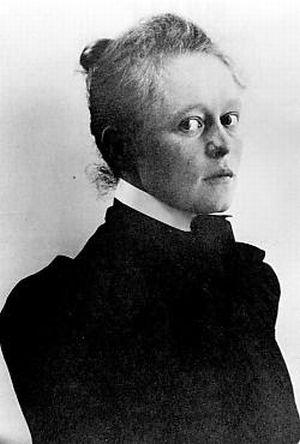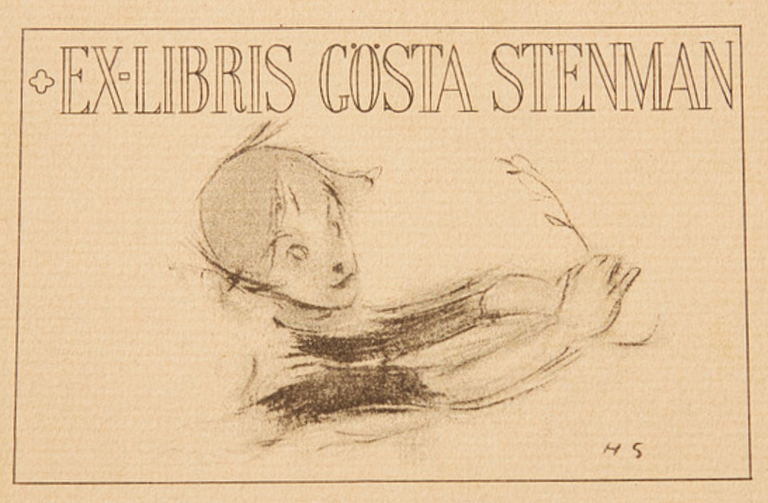Helene Schjerfbeck
"The Convalescent"
Signed HS and dated -45. Watercolour and charcoal 36 x 50 cm.
Alkuperä - Provenienssi
Formerly in the Collection of Gösta Stenman.
Christies, London, March 1989.
Näyttelyt
Stenmans Konstsalong, Stockholm, "Helene Schjerfbeck", 1954, cat. no 136.
Stenmans Konstsalong, Stockholm, "Helene Schjerfbeck", 1958, cat. no 124.
Stenmans Konstsalong, Stockholm, "Helene Schjerfbeck 1862 - 1962 Hyllningsutställning", 1962, cat. no 110.
Ateneum, Helsingfors, "Varianter och nyskapelser", 1962, cat. no 21.
Kunstföreningen, Copenhagen, 1969, cat. no 61.
Seibu Museum of Art, Tokyo, "Scandinavian Art", 17 October - 17 November 1987, cat. no 32, pl. p. 54.
Konstmuseet i Ateneum, Helsinki, "Helene Schjerfbeck och konvalescenter", 30 September - 30 November 1988.
Kirjallisuus
Ahtela (Einar Reuter), 981.
"Helene Schjerfbeck", ed. Leena Ahtola-Moorhouse, Ateneum, 1992, no 494, illustrated on p. 293.
"Helene Schjerfbeck-150 years", ed. Leena Ahtola-Moorhouse, Ateneum Art Museum, 2012, no 711, illustrated p. 347.
Muut tiedot
Helene Schjerfbeck (1862–1946) was one of Finland's most significant modernist painters. She developed a wholly unique modern expression by gradually stripping away all excess in her paintings. Throughout her career, Schjerfbeck returned to themes of vulnerability, recovery, and the inner life of humanity—motifs that clearly reflect her own experiences of fragility and resilience. Among the works that most powerfully embody these issues is her series "The Convalescent," a group of paintings that reflect the transition from a naturalistic style, characterised by fine detail and a clear narrative, to a stylized modernist language.
In July 1887, Helene Schjerfbeck travelled for the first time to St. Ives in Cornwall. She was invited by her friend Marianne Preindlsberger, who was married to the English painter Adrian Stokes. The fishing village of St. Ives on the Land's End peninsula was popular among artists, who socialised and worked closely together in the small locality. Einar Reuter, under the pseudonym H. Ahtela, describes in his monograph on Helene Schjerfbeck the time in St. Ives as a happy period. The small group of artists to which Schjerfbeck belonged gathered in Stokes' studio and met several times a week. The special light and mild climate made it possible to paint en plein air even during the winter months. The surroundings were beautiful, the joy of working was strong, and the financial conditions for the near future were secure.
Schjerfbeck had her studio in a tower overlooking the harbour and the sea. In one of the many preserved letters to her friend and fellow painter from her Paris days, Maria Wiik, she describes how from her tower she could see the fishing boats returning to the harbour in the evenings, lantern by lantern—the sea looked like the Champs-Élysées. Fishermen in reddish-brown oilskins gathered to sort the nets. However, it was difficult to get the fishermen to pose as most spent their days out at sea. Instead, the choice of subjects fell on children, landscapes, and interiors. The first painting Schjerfbeck executed in St. Ives was a composition featuring white-clad girls. In 1888, she painted "The Convalescent," an interior scene depicting a frail and sickly little girl quietly observing a twig with light green buds.
"The Convalescent" is one of Helene Schjerfbeck's most famous paintings. The same year, 1888, it was exhibited at the Salon in Paris under the title Première verdure—"the first greenery"—where it was purchased by the Finnish Art Society and later became part of the Ateneum's collections. Schjerfbeck returned to the motif nine times, which was increasingly simplified until only the essentials remained: the child's face and the hand holding the twig.
Sickly children were a common motif in 19th-century art. Examples include Jenny Nyström's "The Convalescent" (1884, Nationalmuseum), Edvard Munch's The Sick Child (1885, several versions including those at the Gothenburg Museum of Art and Thiel Gallery), Carl Larsson's Convalescence (1899, Nationalmuseum), and Eva Bonnier's Reflex in Blue (1887, Nationalmuseum). When Schjerfbeck began "The Convalescent" in St. Ives in 1887, it had been about a year since her fiancé had broken off their engagement, leaving her with a broken heart. The painting has been interpreted as a self-portrait in which she sensitively processes her own sorrow. In the motif, the artist observes herself from both the child's and the adult's perspective. There is an adult's contemplation in the child's expression, and the tear-filled eyes suggest that her thoughts are far away. Yet the painting is not sentimental—its emotional tone is open and unsentimental, albeit wistful. It is as much about the returning life force, symbolised by the delicate greenery of the twig the child holds.
The objects, from her studio, surrounding the child also reflect the artist's personality and interests: the pen and sheets of paper, the red blotter, the inkwell on the table, and the bookshelf filled with literature. Delving into art books, magazines, and correspondence was crucial to Schjerfbeck's work and constituted a central source of inspiration, reflection, and exchange of ideas.
Schjerfbeck returned to the composition nearly forty years later, in 1927, when she painted a second version in oil in her then more stripped-down and abstracted style. The child holding the budding twig appears against a strongly simplified background. This work served as the basis for a charcoal and watercolour drawing the same year. (The "Convalescent" from 1927 sold for a record-breaking amount at Bukowskis Vårauktion 1985.)
Just over a decade later, at the request of the art dealer Gösta Stenman, Schjerfbeck returned once again to the motif in the form of a black chalk drawing executed in 1938, which served as a prototype for the lithograph she made shortly thereafter. Following that was the work presented in this auction: a final charcoal drawing with watercolour, dated 1945. The ascetic colour palette, the blurred lines, and the strong simplification of the motif also recur in the revealing series of self-portraits that Schjerfbeck created during her final years in Saltsjöbaden outside Stockholm.
Gösta Stenman
When Gösta Stenman first discovered Schjerfbeck in the 1910s, she was relatively unknown, living in isolation and had long been outside the public art scene. Stenman saw in her a unique artist with exceptional modernist potential and quickly became her most important intermediary. The relationship between Helene Schjerfbeck and the art dealer Gösta Stenman is one of the most significant artist–gallerist collaborations in Nordic art history—professional, complex, and deeply marked by mutual dependence.
Stenman took an active role in her support by buying and commissioning works, organising exhibitions in Helsinki, Stockholm, and internationally, and introducing her to a new audience of collectors. He was also the one who persuaded her to explore printmaking. Over time, he became her primary financial supporter, and their collaboration developed into an almost exclusive working relationship that shaped the later stages of Schjerfbeck's long career.
It was Stenman who persuaded her to leave Finland during the war years and settle in Saltsjöbaden outside Stockholm. Helene Schjerfbeck passed away on 23 January 1946, and the following year Gösta Stenman died. His wife, Bertha Stenman, continued to run Stenman's art salon and continued to exhibit Schjerfbeck's works in Stockholm and internationally. The drawing "The Convalescent" (1945) has been part of Gösta Stenman's collection and was exhibited at Stenman's art salon in 1954, 1958, and 1962.
On 5 December 2025, The Metropolitan Museum of Art in New York will open the exhibition "Seeing Silence: The Paintings of Helene Schjerfbeck." It is the first solo exhibition ever of a Finnish artist at The Met.
Photo: Helene Schjerfbeck, 1890s, photographer unknown.
Image: "The Convalescent," oil on canvas, 1888. Finlands Nationalgalleri / Konstmuseet Ateneum. Photo: Ateneum Art Museum / Jenni Nurminen.
Image: "The Convalescent," lithograph, 1938 - 1939. Photo: Ateneum Art Museum / Hannu Pakarinen.











































































